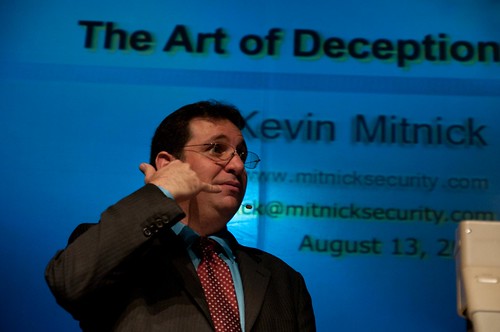
From 2025, line judges will be surplus at top men’s tennis events: they’re being replaced by cameras. CC-licensed photo by Carine06 on Flickr.
You can sign up to receive each day’s Start Up post by email. You’ll need to click a confirmation link, so no spam.
A selection of 10 links for you. Use them wisely. I’m @charlesarthur on Twitter. On Mastodon: https://newsie.social/@charlesarthur. Observations and links welcome.
Mark Zuckerberg: Threads users down by more than a half • BBC News
Tom Singleton:
»
Meta boss Mark Zuckerberg says its new social media platform, Threads, has lost more than half its users.
The Twitter rival rocketed to more than 100 million users within five days of its launch earlier this month.
But Mr Zuckerberg has acknowledged those numbers have now tumbled. “If you have more than 100 million people sign up, ideally it would be awesome if all of them or even half of them stuck around. We’re not there yet,” he said.
Mr Zuckerberg – who made the comments in a call to employees, heard by the Reuters news agency – described the situation as “normal” and said he anticipated retention to improve as new features were added to the app.
Threads was criticised for the limited functionality it had when it launched. Meta has since added new features, such as separate “following” and “for you”‘ feeds, and increased scope to translate posts into different languages. The company’s chief product officer, Chris Cox, told staff it was now focused on adding more “retention-driving hooks” to draw people back to the platform.
He gave the example of “making sure people who are on the Instagram app can see important Threads”. The two platforms are closely tied – in order to sign up for Threads, users must have an Instagram account.
Mr Zuckerberg also updated employees on the company’s enormous bet on a yet-to-be-created virtual reality world, called the Metaverse. He said work on the augmented reality (AR) and virtual reality (VR) technology that would power it was “not massively ahead of schedule, but on track”, adding that he didn’t anticipate it going mainstream until the next decade.
«
OpenAI quietly shuts down its AI detection tool • Decrypt
Jason Nelson:
»
In January, artificial intelligence powerhouse OpenAI announced a tool that could save the world—or at least preserve the sanity of professors and teachers—by detecting whether a piece of content had been created using generative AI tools like its own ChatGPT.
Half a year later, that tool is dead, killed because it couldn’t do what it was designed to do.
ChatGPT creator OpenAI quietly unplugged its AI detection tool, AI Classifier, last week because of “its low rate of accuracy,” the firm said. The explanation was not in a new announcement, but added in a note added to the blog post that first announced the tool. The link to OpenAI’s classifier is no longer available.
“We are working to incorporate feedback and are currently researching more effective provenance techniques for text, and have made a commitment to develop and deploy mechanisms that enable users to understand if audio or visual content is AI-generated,” OpenAI wrote.
New tools allowing the use of increasingly sophisticated AI come online almost daily and have created a cottage industry of AI detectors.
OpenAI announced the launch of its AI Classifier claiming it could distinguish between text written by a human and an AI. Even then, however, OpenAI called the classifier “not fully reliable,” adding that the evaluations on a “challenge set” of English texts correctly identified 26% of AI-written text as “likely AI-written,” while incorrectly labeling the human-written text as AI-written 9% of the time.
OpenAI said limitations of the AI Classifier include being unreliable on text with fewer than 1,000 characters, incorrectly labelling text written by humans as written by AI, and classifiers based on neural networks performing poorly outside of their training data.
«
The arms race continues. AI generators still in the lead.
unique link to this extract
How Sweden’s biggest daily uses ChatGPT in its newsroom • UK Press Gazette
Aisha Majid:
»
Sweden’s biggest daily news outlet has discovered it can use generative AI tools to boost time spent on its articles, especially with younger audiences.
Aftonbladet began experimenting with ChatGPT in its newsroom at the start of the year with the goal of creating a tool to help it test out what generative AI could do.
The result was an AI-generated article summary that readers can choose to open within news articles. The initial results, deputy editor Martin Schori told Press Gazette, have been positive.
Unexpectedly, audiences spend longer reading articles that have summaries than those without. According to Schori, the findings surprised the newsroom, which initially thought the findings were a mistake.
Instead, Schori explained that since readers get a more general understanding of an article upfront, they are more likely to go on and read the whole text.
The summaries, called ‘Snabbversions’ (or ‘quick versions’ in English), use ChatGPT owner OpenAI’s API and are integrated into Aftonbladet’s CMS.
Snabbversions, which have already been rolled out into many of Aftonbladet’s published news and sports articles, have also proven popular with the title’s younger audience. Nearly 40% of younger readers opt to read the summaries.
«
In case you’re wondering, yes, they do get a human to check over the summary. And consider that this is getting ChatGPT to do a summary in Swedish – which is not its most effective language.
unique link to this extract
Japan’s population drops by nearly 800,000 with falls in every prefecture for the first time • The Guardian
Gavin Blair:
»
Every one of Japan’s 47 prefectures posted a population drop in 2022, while the total number of Japanese people fell by nearly 800,000. The figures released by the Japan’s internal affairs ministry mark two new unwelcome records for a nation sailing into uncharted demographic territory, but on a course many other countries are set to follow.
Japan’s prime minister has called the trend a crisis and vowed to tackle the situation. But national policies have so far failed to dent population decline, though concerted efforts by a sprinkling of small towns have had some effect.
Wednesday’s new data showed deaths hit a record high of more than 1.56 million while there were just 771,000 births in Japan in 2022, the first time the number of newborns has fallen below 800,000 since records began.
Even an all-time high increase in foreign residents of more than 10%, to 2.99 million, couldn’t halt a slide in the total population, which has declined for 14 years in a row to 122.42 million in 2022.
In January, prime minister Fumio Kishida said that addressing the birthrate was “now or never” and warned, “Our nation is on the cusp of whether it can maintain its societal functions.”
Japan’s ageing population is already affecting nearly every aspect of society. More than half of all municipalities are designated as depopulated districts, schools are closing and more than 1.2 million small businesses have owners aged about 70 with no successor.
«
Read the rest of the article for some amazing detail about the yakuza (Japan’s version of the Mafia) and, er, senior porn. But overall, 14 years of decline? That’s a dystopia we don’t think about often.
unique link to this extract
Britain is a developing country • Consumer Surplus
Sam Bowman:
»
The UK is thinking like a frontier economy when it should be thinking like a developing country. We’re well off by global standards, but poor by the standards of the frontier. And how rich we get mostly won’t be determined by the Great Stagnation, but by more mundane factors like the cost of energy, the supply of housing and infrastructure, and returns on capital investment.
In a way this is optimistic: the UK has a policy problem, not a fundamental scientific one.
But there is one problem. There is virtually no recognition of how bad things are among British elites. Stefan Dercon, author of Gambling on Development, has a theory about what allows developing countries to experience sustained economic growth: they need their elites to come to an agreement to pursue it. The reforms needed to grow are painful and unpopular in the short-run. Regimes that do them without an “elite bargain” behind them are opening themselves up to being removed. Similarly, when one party in the UK proposes planning liberalisation, almost inevitably the others swing heavily Nimbyish.
In the UK, the preoccupations of the “elite” – by which I mean the people, left and right, in politics, government and media whose views shape those of the country – are with things like Net Zero (above all), inequality, obesity, delivering Brexit, regulating Big Tech, data ethics and privacy, cutting immigration, gender and racial pay gaps, and other priorities that are either unrelated to, or diametrically opposed to, making the country richer. If growth gets mentioned at all it is usually to support some unfunded and poorly targeted tax cut. On the flip side, every proposed tax or spending cut is assessed in terms of its distributional impact, not its effect on growth.
«
There’s a lot of easily absorbed detail in this post, which at the same time sets out the problem very simply. There’s a lot of ground to make up, and we’ve essentially been going backwards for years – perhaps decades.
unique link to this extract
Electronic Line Calling Live to be adopted across the Association of Tennis Professionals (Men’s) Tour • ATP Tour
»
The ATP has announced Tour-wide adoption of Electronic Line Calling Live (ELC Live) from 2025. The advanced officiating technology covers all court lines for ‘out’ calls throughout matches, a role traditionally carried out by on-court line judges.
This significant officiating update follows several seasons during which a combination of ELC Live, ELC Review and on-court line judges has been used at ATP Tour events. The move is set to optimise accuracy and consistency across tournaments, match courts and surfaces, for players competing in both main draw and qualifying events. The decision was supported by extensive research conducted by ATP across tennis stakeholders, including fans, which identified accuracy and consistency as the most important factors in assessing different line-calling systems.
All-court ELC Live coverage will also deliver comprehensive player and ball tracking across the whole Tour, leading to an unprecedented level of data for player-performance analysis and the development of new statistics in the game in collaboration with Tennis Data Innovations (TDI), in addition to future commercialisation opportunities.
«
I missed this when it was announced in April. That gives them about 18 months. One already gets “Hawkeye” replays for many big tournaments, and the US Open used ELC throughout in 2022. I’d love to see an analysis of ELC v humans (the latter being cheaper, of course, but less accurate). How soon before the umpire is a robot too, since the only job will be to call the score and, occasionally, the trainer?
unique link to this extract
The economic cost of Houston’s heat: ‘I don’t want to be here anymore’ • WSJ
Rachel Wolfe and Amara Omeokwe:
»
Houstonians pride themselves on how they tolerate heat. This summer, the heat has become intolerable.
Businesses and residents in America’s fourth-largest city have moved much of life indoors, changing work and spending habits. Some residents say they are reminded of quarantining during the pandemic’s early days: ordering in groceries, avoiding social commitments and looking for ways to stay entertained from the couch.
The result is a dent to the local economy that could become an annual pattern if summers stay hotter for longer.
“This year is different, people are staying home,” said Barbara Stewart, a professor of human development and consumer sciences at the University of Houston.
At Buffalo Bayou Brewing, a taproom and restaurant in the Heights neighborhood, fewer people are coming to the restaurant during the day, said Jonathan Horowitz, chief revenue and strategy officer. Earlier this month, the restaurant purchased two new portable cooling units to put behind the rooftop deck’s bar to better keep staff cool.
He estimates revenue during the heat wave is down roughly 10% compared with the same time in 2022.
“It seems like the time frame of this kind of heat has expanded beyond what it used to be,” Horowitz said. “We always had 100-degree days, but when you have 100-degree days for two months straight, that’s different.”
Employees at small- and medium-size businesses in the tourism, arts and entertainment and sports and recreation industries in Texas averaged 19.6 hours on the job a week between mid-June and mid-July, a 20% decline from the average during comparable weeks from 2019 to 2022, according to an analysis from Luke Pardue, an economist at payroll platform Gusto.
«
“If” summers stay hotter for longer? What are you expecting to happen, WSJ? Climate change to suddenly go into reverse?
unique link to this extract
U.S. heat waves prompt surge in use of natural gas, a fossil fuel • The Washington Post
Timothy Puko:
»
There’s a big winner in the record heat waves baking the United States, China and other countries — fossil fuels.
The United States is setting records for natural gas consumption this week at the power plants that keep the nation’s air conditioners humming, according to estimates from S&P Global Commodity Insights. In China, power plants are burning more coal to keep up with electricity needs, helping to feed a record pace in demand this year for the world’s largest source of carbon dioxide, the International Energy Agency said Thursday.
That demand is feeding what the Paris energy watchdog calls a “vicious cycle” that further boosts world temperatures. As heat waves multiply and intensify, it creates more demand for fossil fuels, which add to the greenhouse-gas emissions that intensify extreme heat around the world.
The world’s power grids are still too reliant on gas and coal, complicating efforts by the Biden administration and other governments to phase down their use. Despite climate commitments, governments face immediate imperatives to prevent power blackouts and skyrocketing energy prices to cool buildings and protect people from life-threatening conditions.
“The projection for how much energy you need is higher and higher because the cooling needs to go up,” said Jason Bordoff, founding director of the Center on Global Energy Policy at Columbia University. “There are these tragic ironies all over the climate space.”
«
But Lord David Frost said we’d all “adapt” to higher temperatures! That’s not “adapting”!
unique link to this extract
Worldcoin isn’t as bad as it sounds: It’s worse • Blockworks
Andrew Bailey and Nick Almond:
»
Worldcoin — a new financial system connected to sensitive biometric information, mostly harvested from poor people — sure sounds like a terrible idea.
“Terrible” doesn’t do it justice.
Worldcoin will need to assemble a vast database of iris data. But not everyone is eager to gaze into an Orb. In the bootstrapping phase, at least, you had to pay people to scan their eyes. And so Worldcoin turned to the global south — home to the cheapest eyeballs — and played a dark game of ‘what will people do for money?’
Incredibly, Worldcoin was unprepared for an obvious consequence of this rollout strategy: A black market for verified credentials. You can now seemingly buy a World ID for as little as $30. Anyone, then, with more than $30 on hand can command more than one digital identity (although Worldcoin is aware of this issue and has proposed solutions to resolve it). Connecting real people to digital identities is a thorny puzzle.
Worldcoin does not fix this. And it’s unlikely it ever can, since nothing in the design can stop professional sybil attackers farming eyeballs on the ground level through nefarious means.
This does not inspire trust in the system or its designers. And yet trust is what they demand. Worldcoin’s promotional materials are full of promises — to delete sensitive biometric information, or keep it hidden from view, or not use it in nefarious ways. One blog post (quoted here; the original appears to have been changed since initial release) put it this way: “During our field-testing phase, we are collecting and securely storing more data than we will upon its completion… We will delete all the biometric data we have collected during field testing once our algorithms are fully-trained.”
«
If the crypto websites don’t like your project, you’ve really got a problem, haven’t you. Though the question of whether Worldcoin will discover if two irises are (functionally) identical, rather as fingerprints can be, remains to be answered. Molly White (of Web3IsGoingJustGreat) has much the same view.
unique link to this extract
Typo leaks millions of US military emails to Mali web operator • Financial Times
Jacob Judah, Chris Cook, Mehul Srivastava, Max Harlow and Felicia Schwartz:
»
Millions of US military emails have been misdirected to Mali through a “typo leak” that has exposed highly sensitive information, including diplomatic documents, tax returns, passwords and the travel details of top officers.
Despite repeated warnings over a decade, a steady flow of email traffic continues to the .ML domain, the country identifier for Mali, as a result of people mistyping .MIL, the suffix to all US military email addresses.
The problem was first identified almost a decade ago by Johannes Zuurbier, a Dutch internet entrepreneur who has a contract to manage Mali’s country domain.
Zuurbier has been collecting misdirected emails since January in an effort to persuade the US to take the issue seriously. He holds close to 117,000 misdirected messages — almost 1,000 arrived on Wednesday alone. In a letter he sent to the US in early July, Zuurbier wrote: “This risk is real and could be exploited by adversaries of the US.”
One misdirected email included the travel itinerary of General James McConville, the US army’s chief of staff, and his delegation as they prepared for a trip to Indonesia earlier this year
Control of the .ML domain will revert on Monday from Zuurbier to Mali’s government, which is closely allied with Russia. When Zuurbier’s 10-year management contract expires, Malian authorities will be able to gather the misdirected emails. The Malian government did not respond to requests for comment.«
This was roughly two weeks ago, but I can’t find any update on it. Has Mali got it all? Has it given it back? On tenterhooks now.
unique link to this extract
| • Why do social networks drive us a little mad? • Why does angry content seem to dominate what we see? • How much of a role do algorithms play in affecting what we see and do online? • What can we do about it? • Did Facebook have any inkling of what was coming in Myanmar in 2016? Read Social Warming, my latest book, and find answers – and more. |
Errata, corrigenda and ai no corrida: none notified












